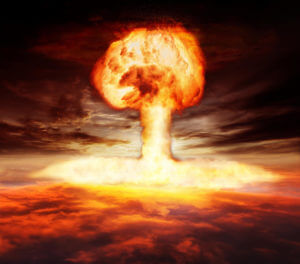
The Nevada Test Site played a significant role in United States history, but its legacy also left a lasting impact on communities nearby. Known for its extensive nuclear weapons testing during the mid-20th century, the site raises important discussions about public health, safety, and environmental concerns.
For downwinders — individuals living in areas that experienced radioactive fallout — understanding the history and consequences of the Nevada Test Site is essential.
Let us explore facts about the Nevada Test Site, shedding light on its function, history, and its effects on health and surrounding communities.
What Is the Nevada Test Site
The Nevada Test Site, now called the Nevada National Security Site, was established in 1951 for testing nuclear weapons by the United States Department of Energy. Located about 65 miles northwest of Las Vegas, this 1,360-square-mile area served as a key nuclear testing ground during the Cold War.
Over 1,000 nuclear tests were conducted here between 1951 and 1992, with nearly 100 of them being atmospheric tests visible for miles around. The remaining were underground tests designed to minimize environmental fallout.
Why Was It Significant
The Nevada Test Site symbolized the United States’ advancement in nuclear technology during a time of global tension. However, the tests carried severe consequences for nearby communities, particularly downwinders living in areas affected by radioactive fallout.
Understanding the Nevada Test Site is vital for acknowledging its historical importance and addressing ongoing public health concerns.
Key Facts About the Nevada Test Site
The following are some facts about the Nevada Test Site that you might want to know.
1. Largest Nuclear Testing Ground in the U.S.
The Nevada Test Site was the largest nuclear testing facility in the nation. Its remote desert location made it ideal for conducting tests far from dense populations.
2. Visible Mushroom Clouds
During the era of atmospheric testing, mushroom clouds generated by nuclear explosions were visible from Las Vegas. They became a tourist attraction before the risks of radiation were fully understood.
3. Transition to Underground Tests
After the Limited Nuclear Test Ban Treaty of 1963, all tests at the site were required to be underground, which reduced but did not eliminate radioactive exposure risks.
4. Long-Lasting Fallout Effects
Radioactive materials from the Nevada Test Site continue to affect the environment and public health to this day. Cesium-137 and other radioactive isotopes remain present in the soil and may continue to pose risks.
How Did the Nevada Test Site Impact Downwinders
The following outlines how the nuclear test at the Nevada Test Site impacted downwinders.
Exposure to Radioactive Fallout
Radioactive fallout from nuclear tests at the Nevada Test Site did not remain contained. Wind patterns carried radioactive particles to nearby areas, including southern Nevada, northern Arizona, and southern Utah.
These particles entered water sources, contaminated crops, and exposed residents to radiation over extended periods.
Health Risks from Exposure
Exposure to radioactive fallout increased the risk of certain cancers and other health conditions. Common cancers linked to fallout exposure include:
- Thyroid cancer
- Lung cancer
- Leukemia
- Breast cancer
- Multiple myeloma
- Pancreatic cancer
Diseases related to radiation exposure may take decades to develop, making it essential for downwinders to monitor their health closely.
Government Compensation Programs
Recognizing the impact of the Nevada Test Site fallout, the U.S. government created the Radiation Exposure Compensation Act (RECA) in 1990. This program provides financial compensation to individuals diagnosed with specific cancers or illnesses linked to fallout exposure. Eligible claimants, including downwinders, can receive $50,000 in tax-free compensation.
Steps Downwinders Can Take
Understanding your eligibility for compensation and resources is critical if you or a loved one has been affected by radioactive fallout from the Nevada Test Site.
Learn if You Qualify for RECA Compensation
If you lived in or near affected areas during the testing periods and were diagnosed with an eligible cancer, you may qualify for compensation under RECA. Covered areas include parts of Nevada, Utah, and Arizona.
File Your Claim
You can file a claim for $50,000 in tax-free compensation through the RECA program. Assistance is available from the Cancer Benefits Center for Downwinders® to guide you through the claim process.
Connect With Support Services
Organizations like the Cancer Benefits Center for Downwinders® provide resources to affected individuals and families. Our experienced team can help you determine your eligibility and assist with completing your claim forms. We also offer helpful maps and information about covered areas and illnesses.
Monitor Your Health
If you believe you were exposed to radioactive fallout, proactively monitor your health. Schedule regular check-ups and consult healthcare providers for any concerns.
Get Compensation for Atmospheric Nuclear Tests at the Nevada Test Site in Nevada
If you or someone you love has been diagnosed with a covered illness and lived in an affected area, you might be eligible for compensation.
At the Cancer Benefits Center for Downwinders®, you can learn more about eligibility and how to file a claim. Our team provides thorough support and guidance throughout the process to ensure you can get the help you need.
For more information, call us toll-free at 1 (855) 631-7197 or file a Downwinders® application using our contact form. We will get back to you and help you get the compensation you deserve!
 Downwinders® Claims
Downwinders® Claims